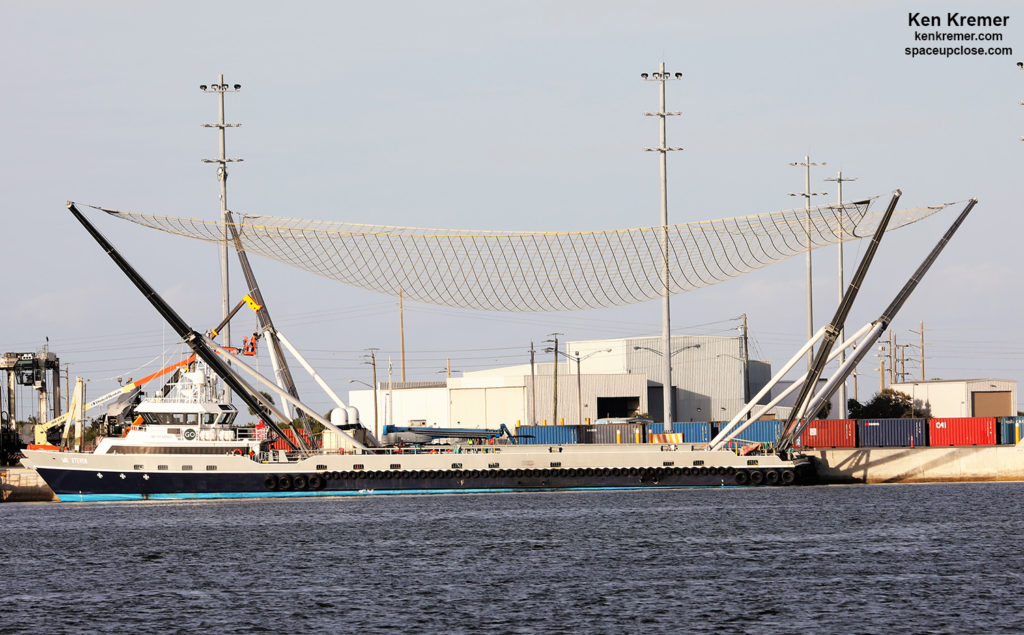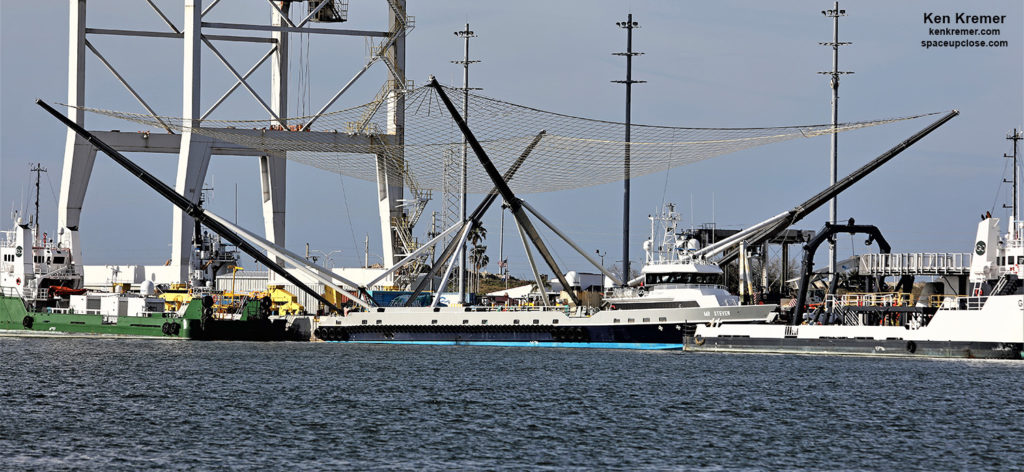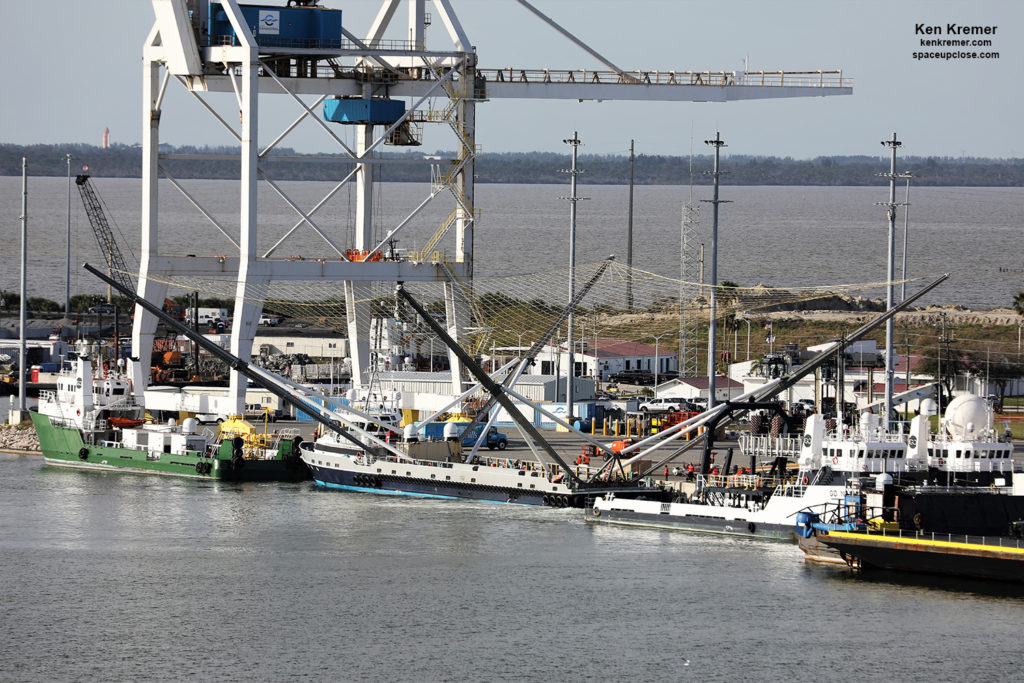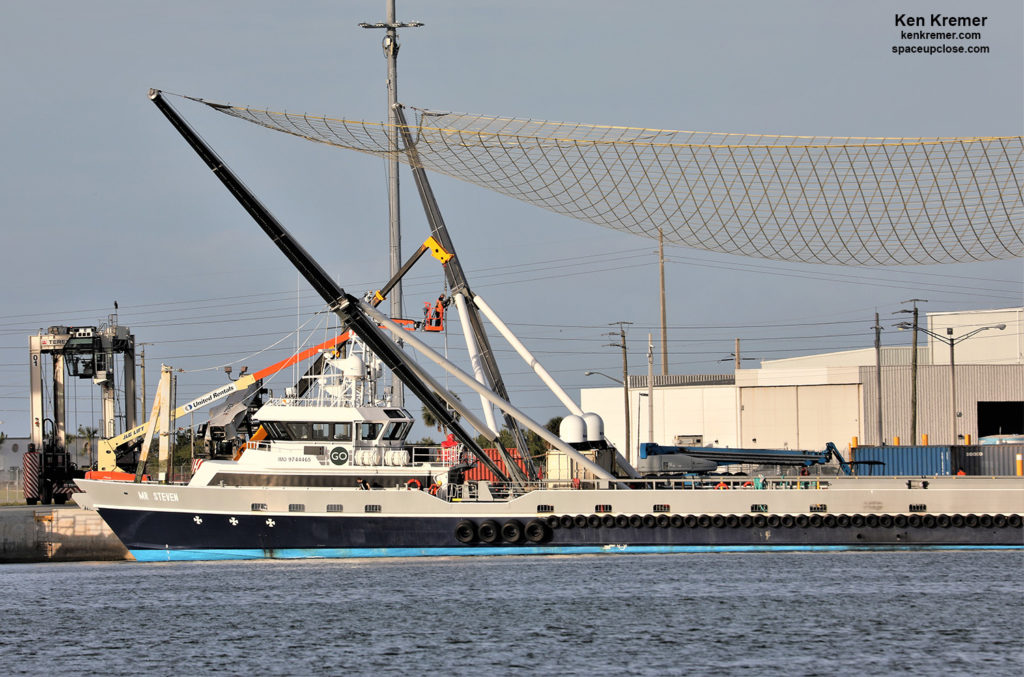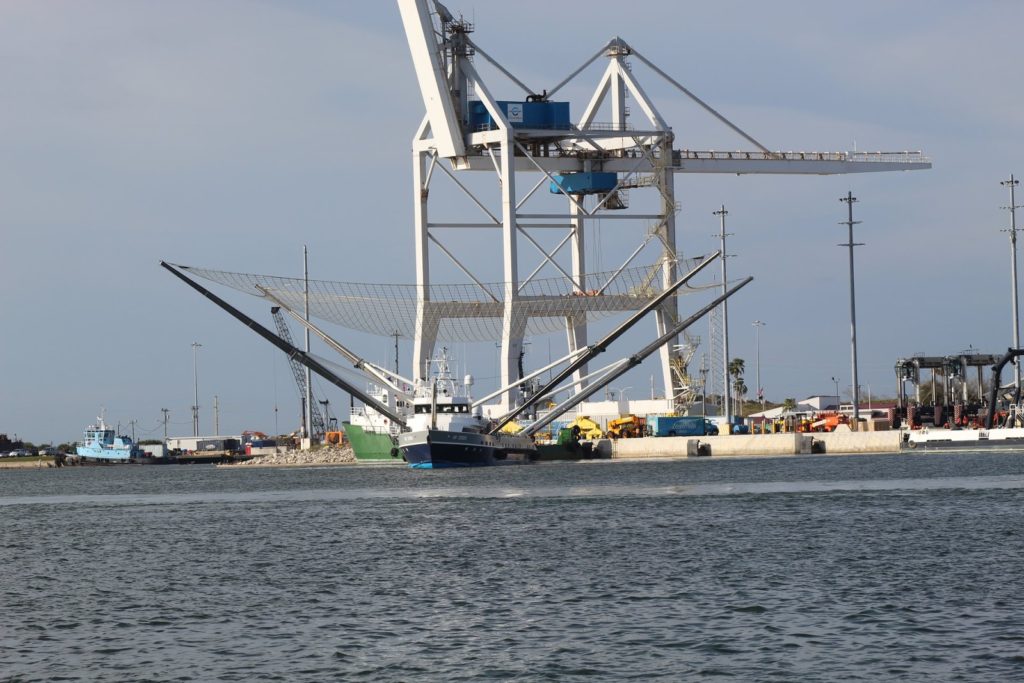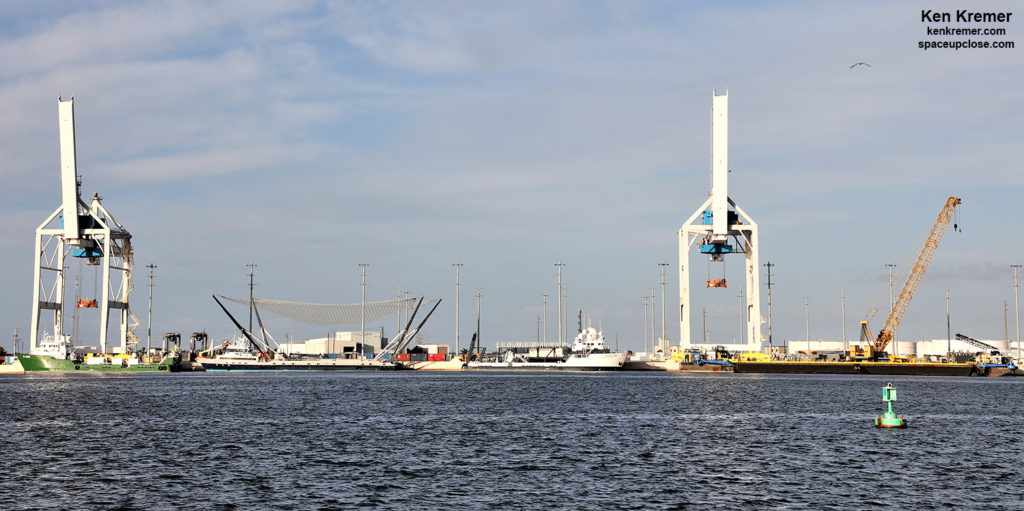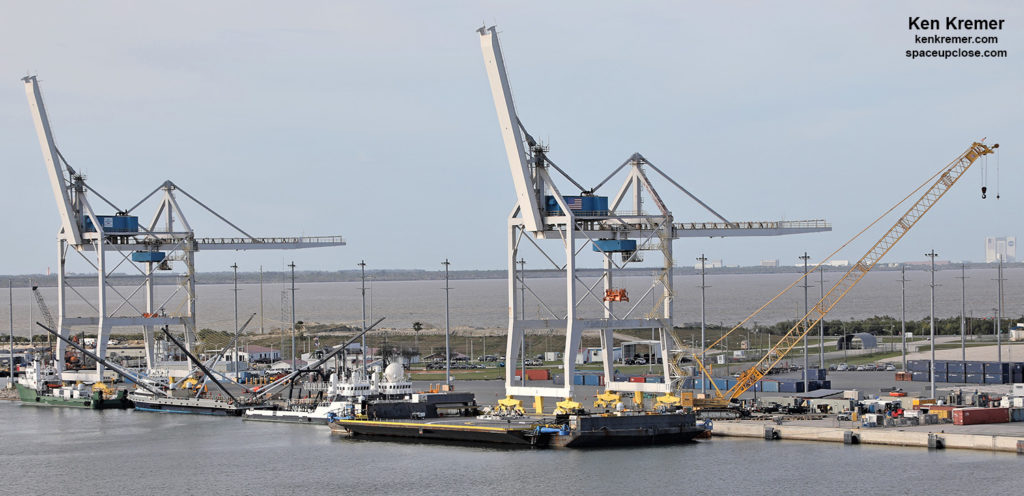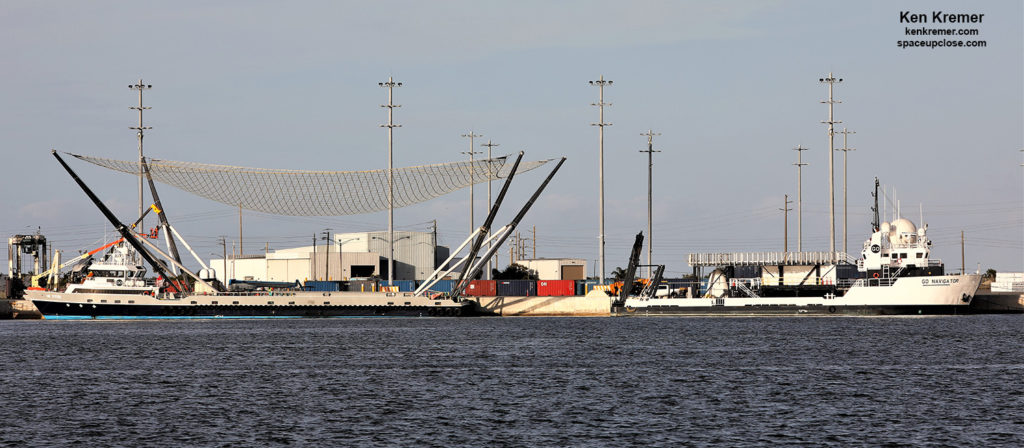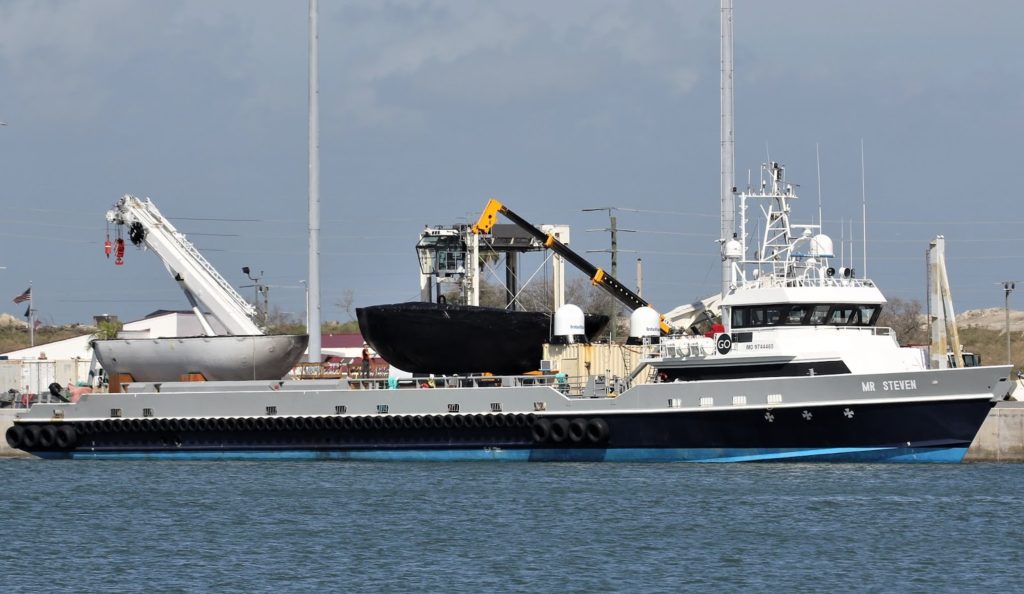Ken Kremer – – SpaceUpclose.com & RocketSTEM – – 15
February 2019
PORT CANAVERAL, FL – Mr. Steven is taking shape and now sports
his nifty fairing ‘fishnet’ and its unlike anything ever seen here on the Florida
Space Coast.
The massive fishnet that will be used to catch falling nose
cones from SpaceX Falcon rocket launches was mounted on the unique boat whimsically
named Mr. Steven by dock workers Thursday afternoon, Feb. 14.
as next week following a SpaceX Falcon 9 launch tentatively slated for Thursday
evening, Feb 21.
Mr. Steven sailed into Port Canaveral for the first time just
this week early Monday morning, Feb. 11 after a two week voyage from the Port of
Los Angeles. Read our story here.
Since then workers have wasted no time readying Mr. Steven to
nab nose cones falling from the sky and spent the past few days outfitting the
ship first with 4 massive arms.
Then on Thursday afternoon the workers set about attaching what
looks like a giant ‘trampoline’ or ‘fishing net’ which functions as a huge ‘catchers
mitt’ to catch used payload fairing halves descending by parachute in mid-air after
rocket launches – but before they hit the ocean and suffer corrosion by salts and
structural damage by impact.
Next the captain took the fully rigged Mr Steven out for a brief
spin, unberthed and turned the ship 180 degrees around in the ports channel in a test exercise – right beside
the OCISLY ocean going drone ship used for sea landings of the spent Falcon 9 first
stages.
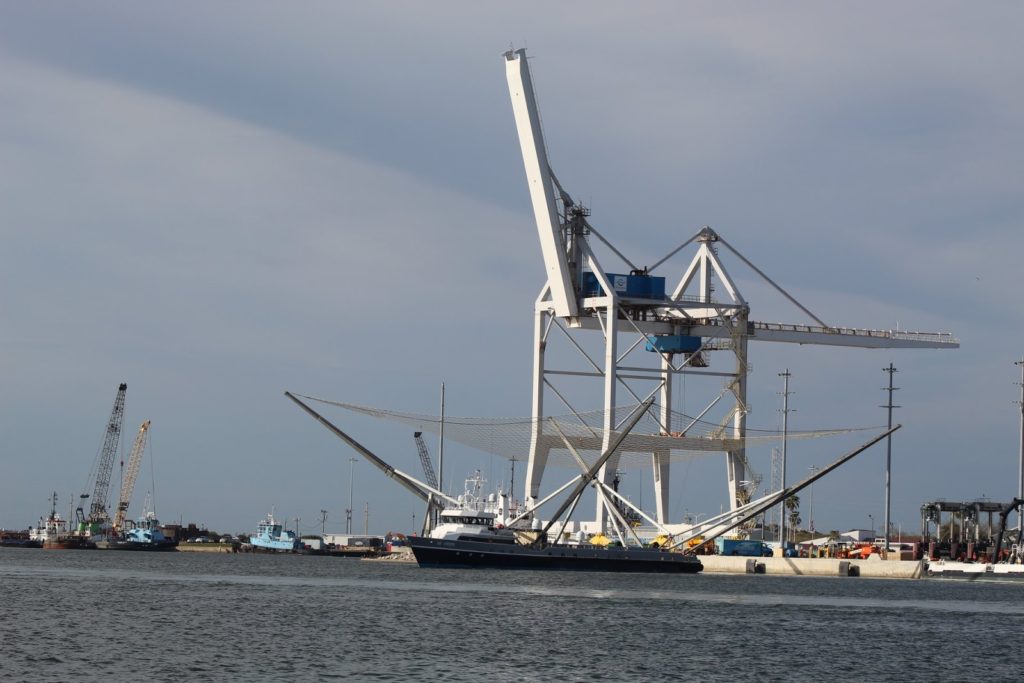 |
|
Credit: Jean Wright/Space UpClose
|
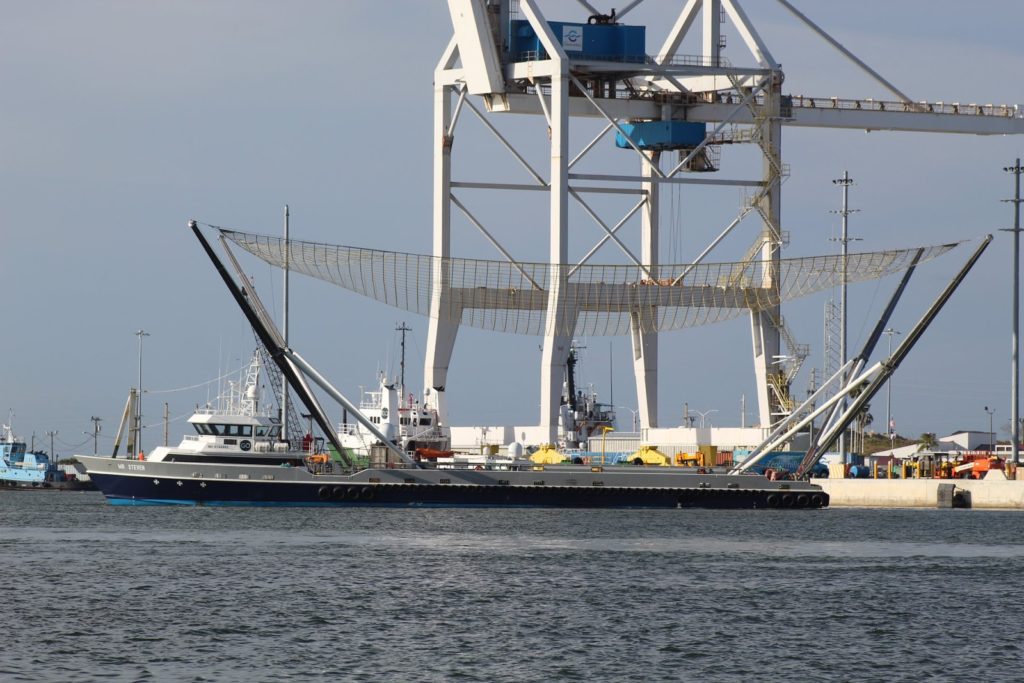 |
|
Credit: Jean Wright/Space UpClose
|
Enjoy our gallery of Space UpClose images taken
in Port Canaveral.
Its quite a sight seeing the SpaceX naval fleet of four
ships berthed side by side in Port Canaveral, highlighted by the improbable looking
Mr. Steven.
Mr Steven will try and catch the fairings with the giant trampoline-like
net as they fall from the sky beneath a parachute before smashing into the sea
waters.
SpaceX has tried this netting attempt scenario several times
already on the West Coast after Falcon 9 launches from Vandenberg AFB, California
but not yet succeeded. Although the ship
has come close a few times and almost succeeded on the last attempt.
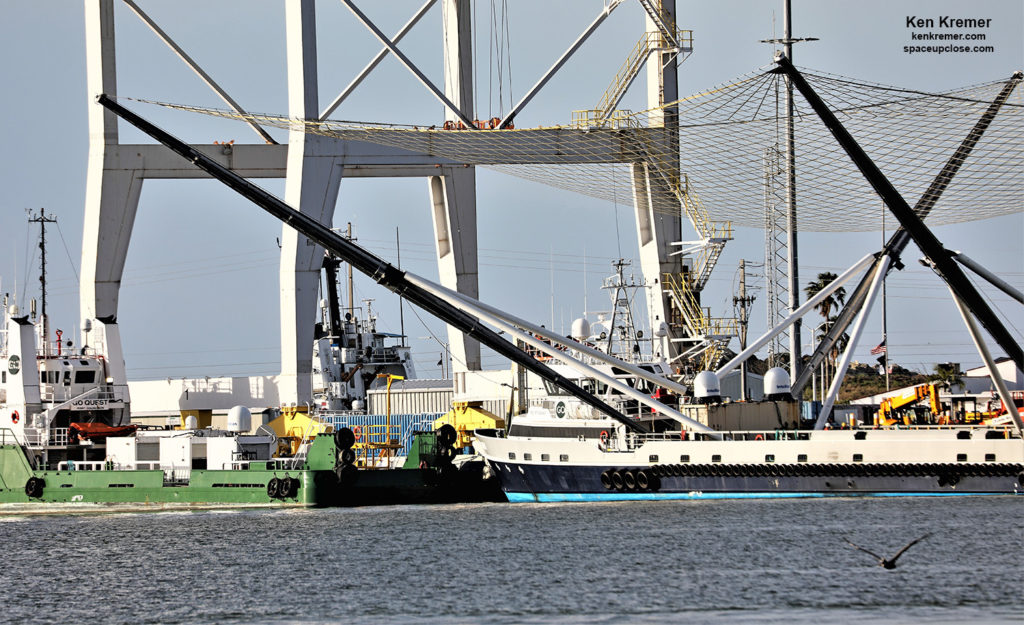 |
|
Credit: Ken Kremer/kenkremer.com/spaceupclose.com
|
The twin payload fairings are bolted on top of SpaceX’s
Falcon family of rockets and protect the valuable cargo payloads housed inside from
destructive aerodynamic forces after launch as the rocket pierces the Earth’s
atmosphere. The fairing halves then separate and are jettisoned about 4 minutes
after launch and then normally descend in a free fall and crash into the ocean.
SpaceX hope to change that past paradigm with Mr. Steven.
SpaceX CEO and billionaire founder Elon Musk says the
ultimate goal is to recover and recycle the nose cone fairings for another
launch and thereby help slash the high cost of access to space.
an overall cost of about $60 million for a new Falcon 9 rocket. That’s contributing
roughly 10% and thus counts as a significant share of the overall cost.
The approximately 5500 mile (8800 km) voyage from the West
Coast Port of Los Angeles to the East Coast Port took about 13 days and passed
through the Panama Canal.
Mr. Steven was transporting two fairing halves and the four
massive arms on its deck during the long voyage which were easily visible upon
its arrival. They were craned off by early Monday afternoon.
See our photos showing the arrival and craning operation.
The next SpaceX Falcon 9 rocket launch is currently slated
for Feb. 21 carrying the Nusantara Satu communications satellite for Indonesia
and the SpaceIL Beresheet lunar lander.
For more all on this
Fox 35 Orlando interviewed me about Mr. Steven’s arrival and fairing recovery
goals.
http://www.fox35orlando.com/news/local-news/spacex-boat-hopes-to-revolutionize-how-we-launch-and-recycle-rockets
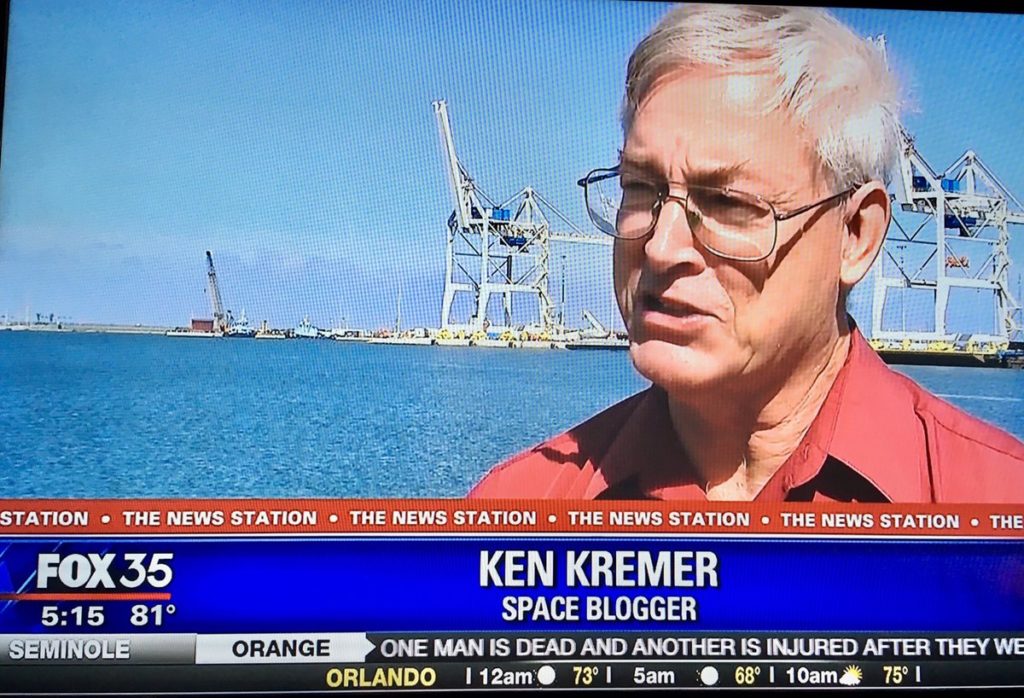 |
|
Dr. Ken Kremer/Space UpClose interviewed on Fox 35 TV News
Orlando about SpaceX Mr. Steven boat and payload fairing recovery goals on Feb 11, 2019. Credit: Fox 35/Ken Kremer |
Watch for Ken’s
continuing onsite coverage of NASA, SpaceX, ULA, Boeing, Lockheed Martin,
Northrop Grumman and more space and mission reports direct from the Kennedy
Space Center, Cape Canaveral Air Force Station, Florida and Wallops Flight
Facility, Virginia.
Stay tuned here for Ken’s continuing Earth and Planetary science
and human spaceflight news: www.kenkremer.com –www.spaceupclose.com –
twitter @ken_kremer – email: ken at kenkremer.com
Dr. Kremer is a research scientist and journalist based in the
KSC area, active in outreach and interviewed on TV and radio about space topics.
Ken’s photos are for sale and he is available for lectures and outreach events
to ISS, NASA missions, ULA Atlas & Delta
launches, SpySats and more at Ken’s upcoming outreach events at Quality Inn Kennedy Space Center, Titusville,
FL, evenings:
20/22: “SpaceX Falcon 9 Nusantara Satu launch, Dragon CRS-16 resupply launch to ISS, SpaceX
Falcon GPS 3-01, SpaceX Falcon Heavy & Falcon 9 launches, upcoming SpaceX Falcon
9 USAF GP3 3-01, NRO & USAF Spysats, SLS, Orion, Boeing and SpaceX Commercial
crew capsules, OSIRIS-Rex, Juno at Jupiter, InSight Mars lander, Curiosity and
Opportunity explore Mars, NH at Pluto, Kuiper Belt and more,” Kennedy Space
Center Quality Inn, Titusville, FL, evenings.
Photos for sale


